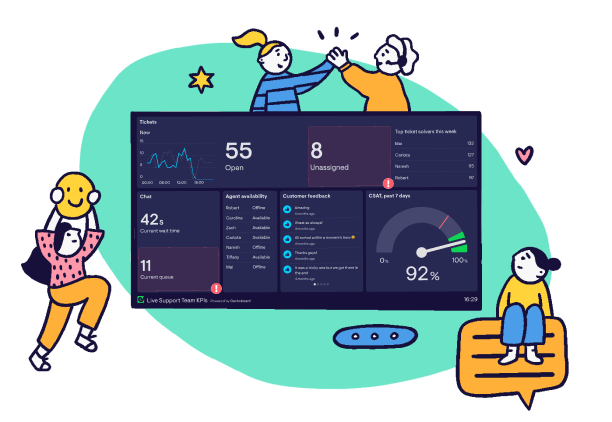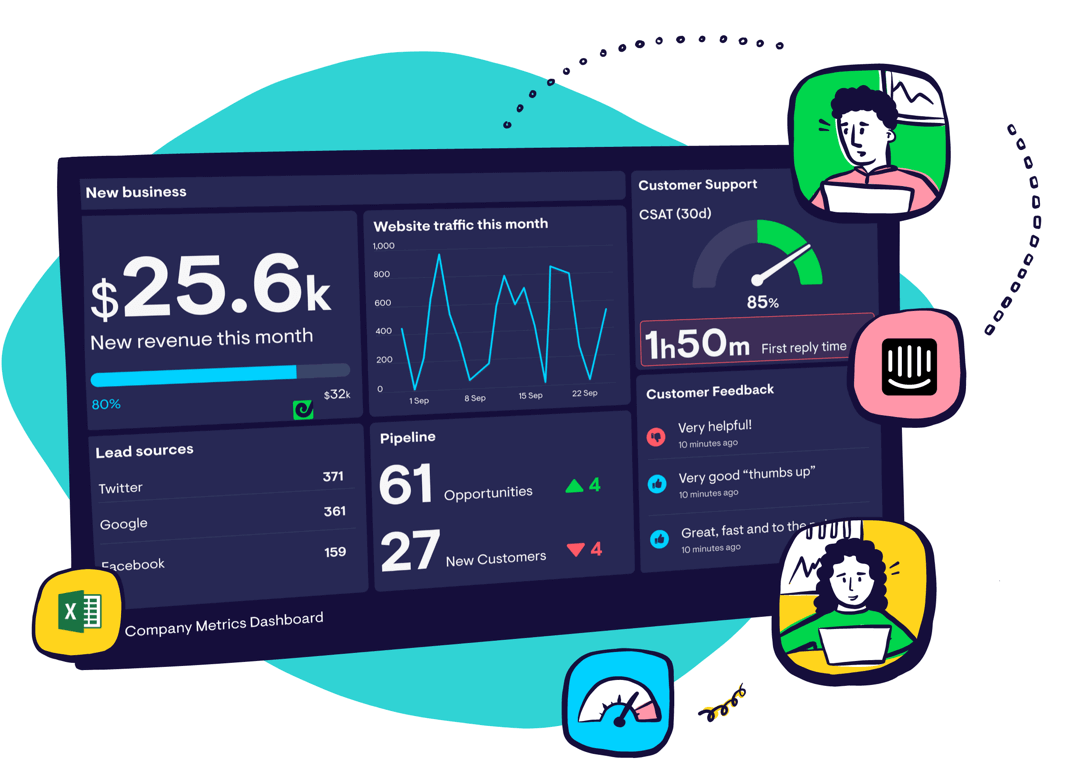Agent Touches per Ticket
Agent Touches per Ticket measures how many times an agent replies to a customer before coming to a resolution.
Similar to Average Handle Time, this resolution effort metric gives you a measure of the time an agent spends working on a single support interaction, as well as an idea of the effort required by the customer to get their issue resolved.
There can be a huge difference in how customers perceive tickets with a lot of touches. If, say, an agent resolved an issue and did so with a few extra replies here and there to build a friendly rapport this may result in a more satisfied customer. By measuring the number of agent touches you can try to find that sweet spot between “robotic” and “overly chatty”.
This metric is also referred to as Replies per Resolution and Replies per Ticket.
What does Agent Touches per Ticket tell you?
Typically you’ll find that your Customer satisfaction (CSAT) score and Average Resolution Times tend to decline when the number of ticket touches increases. There will always be complex tickets that require a lot of back and forth between an agent and customer, so focus on the median number of touches per ticket across your organization to establish a baseline to measure performance against.
Follow this up by monitoring the tickets above the median to look for any anomalies in the trend. If an agent has a higher than average number of ticket touches it may indicate that they’re reaching out to customers unprepared, or need to ask for help more. You can rectify this by providing more training and coaching for your agents and by creating more documentation or support tools.
It’s also worth taking a step back and considering how your Ticket Volume and First Response Time (FRT) impact on your agent touches per ticket. For example, there’s a risk that focusing on a rapid first response could lead to unnecessary follow-up replies that eventually have a detrimental effect on the number of replies per ticket.
How to calculate Average Ticket Touches?
Total Number of Ticket Touches / Total Number of Resolved Tickets = Average Ticket Touches (mean)
You can calculate your mean Average Agent Touches per Ticket by taking the total number of replies on resolved conversations and dividing that by the total number of resolved conversations with at least one reply within the currently selected time period.
To calculate your median, list all the touch times in value order and find the middle value.
You could also filter your Average Ticket Touches by agent, team or time zone to see where improvements can be made.
Give your support team a boost
With Geckoboard’s real-time dashboards, everyone knows exactly what’s happening in CS right now.
Find out more
Should you track Agent Touches per Ticket?
Agent Touches per Ticket is just one of several resolution effort metrics (other examples include handle time and requester wait time) that help measure a team’s ability to handle different kinds of support scenarios. Your baseline should reflect the type of product or service your organization offers and your approach to support, as well as the team’s structure.
Let’s say you’re analysing the performance of an individual support agent and their average ticket touches are higher this month compared with the previous three. By individually reviewing those tickets that needed the most replies before resolution you can identify which types of tickets, subjects or processes that agent might be struggling with. Or it might point to a bigger problem, such as an underlying issue with the product or service.
It’s worth noting that a lower Agent Touches per Ticket average doesn’t always mean that things are going as well as they could. It’s important that agents don’t feel overly pressured to reduce their ticket touches when there’s a genuine need to go back and forth with customers.
You also have to consider the potential impact on your CSAT score. Pressing too hard on economising touches, for example, might mean you start to cut out those extra personable replies that help build a rapport between agent and customer. In essence, your average ticket touches shouldn’t be too high, but it should always be set aside to give customers the best support experience.
